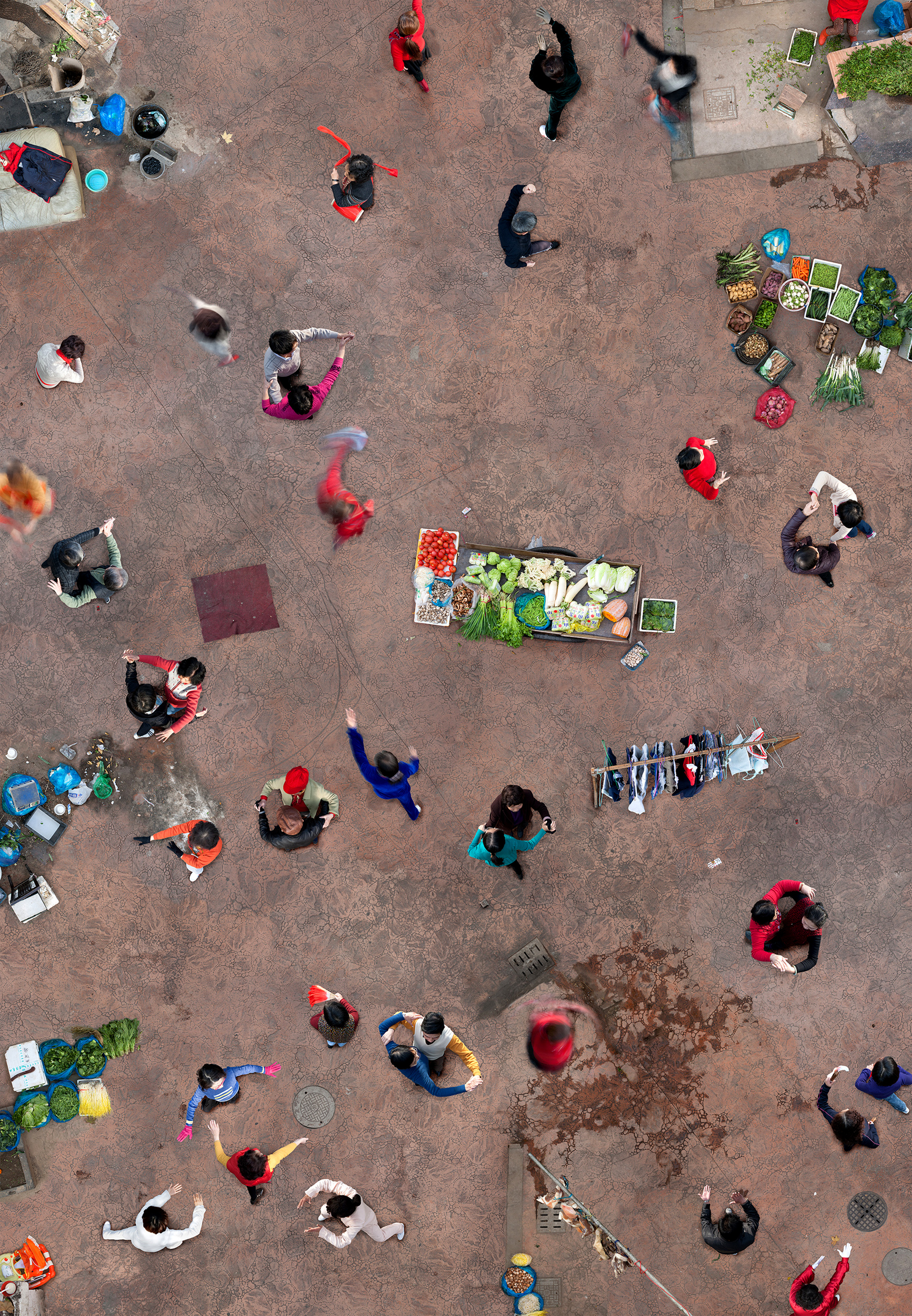De Dam, Amsterdam
Piezography
size: 120 x 173 cm 47"x 68"
year: 2016
Korfmann aims to capture the memory of a place in designing a literal image of time. The essence of both is the background, the flat surface to which she refers as 'space zero', on which she groups the different fragments of memory captured by the camera. This way, the originally two dimensional surface has become a new, more or less virtual space. Even though the works to be seen in the show Count for Nothing originated at totally different locations on the globe, people do not look that different when seen from above. Only at a closer look, different cultures and rituals will become visible; such as products being carried on the head in the photo from Luanda (Angola). Also the black dresses of the women in Teheran relate to the Academic robes worn by the graduate students of the University of Cambridge.
Running with the Bulls (2 x 12 min), Pamplona
Piezography
size: 145 x 100 cm 57” x 39 "
year: 2012
Korfmann aims to capture the memory of a place in designing a literal image of time. The essence of both is the background, the flat surface to which she refers as 'space zero', on which she groups the different fragments of memory captured by the camera. This way, the originally two dimensional surface has become a new, more or less virtual space. Even though the works to be seen in the show Count for Nothing originated at totally different locations on the globe, people do not look that different when seen from above. Only at a closer look, different cultures and rituals will become visible; such as products being carried on the head in the photo from Luanda (Angola). Also the black dresses of the women in Teheran relate to the Academic robes worn by the graduate students of the University of Cambridge.
Horizon Vanished (6 hours)
Piezography
size: 150 x 565 cm
year: 2011
Horizon Vanished is a work photographed on a square in Amsterdam West which is near Korfmann’s studio. It is a collage of hundreds of photos which were shot over a period of six hours on one afternoon in order to create a literal image of time, as if it were a container for the memory of the space itself. The images were photographed from a crane so that people, animals and objects are seen from above, and we clearly see the shadows they cast onto the square as living sun dials. The artist scanned the square one by one and turned the shadows to make it appear as if all of the figures were caught at the same moment in the day. Only on closer inspection does the viewer become aware that the highly contrived image is more ambiguous than at first glance. The six hours of random pedestrians are brought together in an impossible image which proposes an archive of incidental traces and irretrievable memory from a typical day in the existence of the square.
Freek Lomme, 2011
Madison Boogie Woogie (64 min) New York
Piezography
size: 145 x 100 cm 57" x 39"
year: 2010
Korfmann aims to capture the memory of a place in designing a literal image of time. The essence of both is the background, the flat surface to which she refers as 'space zero', on which she groups the different fragments of memory captured by the camera. This way, the originally two dimensional surface has become a new, more or less virtual space. Even though the works to be seen in the show Count for Nothing originated at totally different locations on the globe, people do not look that different when seen from above. Only at a closer look, different cultures and rituals will become visible; such as products being carried on the head in the photo from Luanda (Angola). Also the black dresses of the women in Teheran relate to the Academic robes worn by the graduate students of the University of Cambridge.
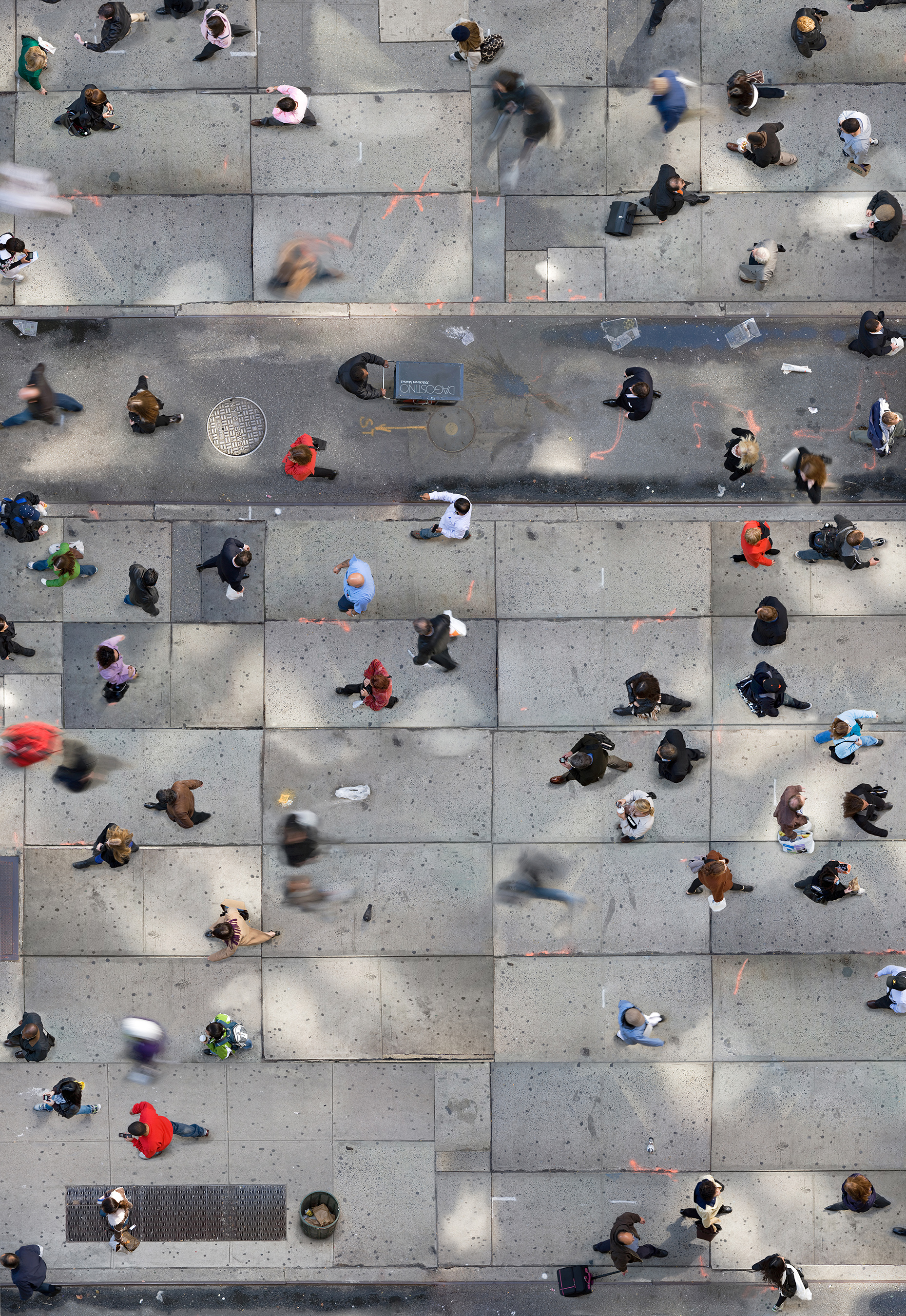
Anton de Komplein, Amsterdam
Piezography
size: 267 x 489 cm 105” x 193"
year: 2018
Korfmann aims to capture the memory of a place in designing a literal image of time. The essence of both is the background, the flat surface to which she refers as 'space zero', on which she groups the different fragments of memory captured by the camera. This way, the originally two dimensional surface has become a new, more or less virtual space. Even though the works to be seen in the show Count for Nothing originated at totally different locations on the globe, people do not look that different when seen from above. Only at a closer look, different cultures and rituals will become visible; such as products being carried on the head in the photo from Luanda (Angola). Also the black dresses of the women in Teheran relate to the Academic robes worn by the graduate students of the University of Cambridge.
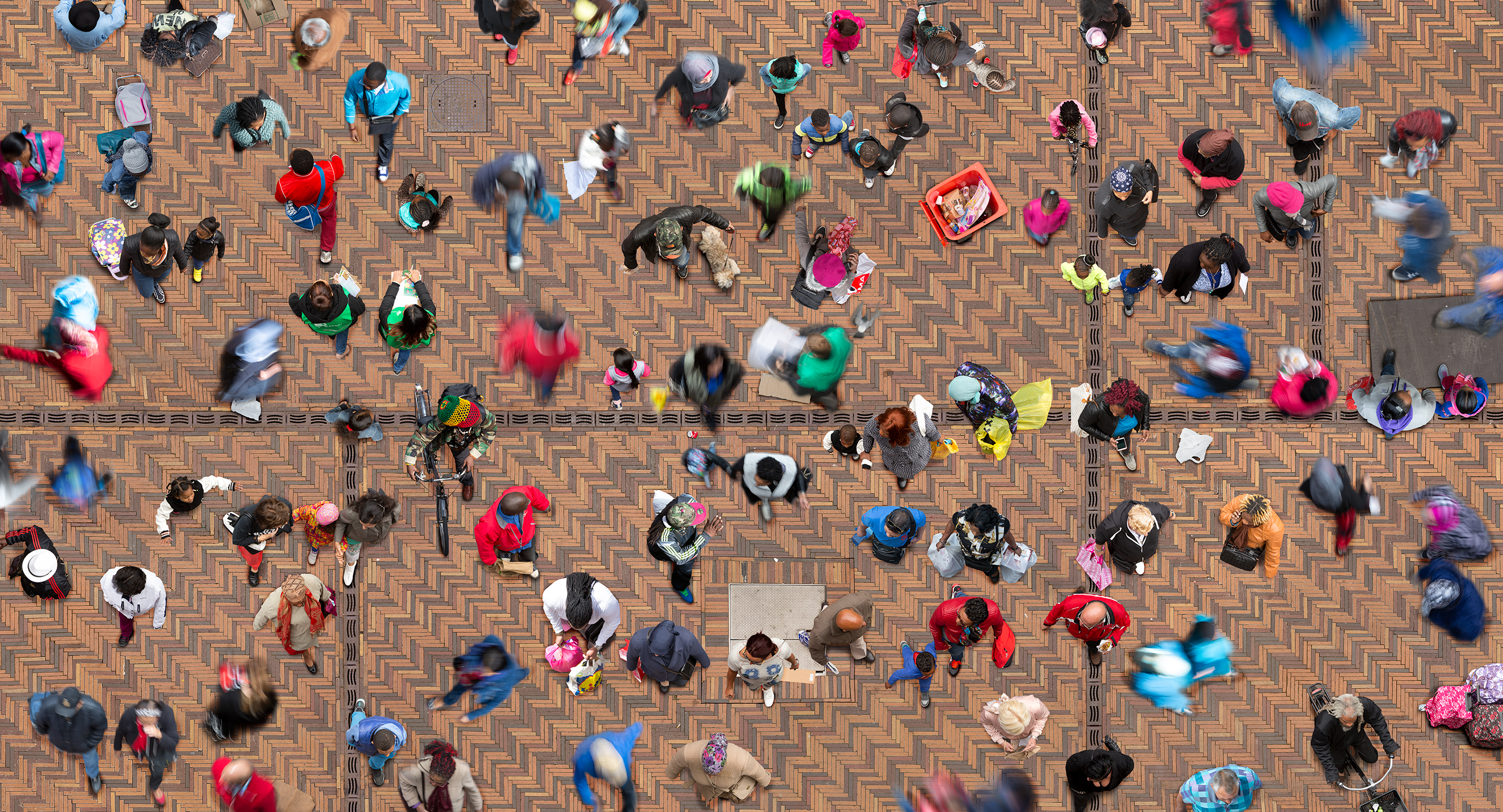
King´s College (7,5h 2d), Cambridge
Piezography
size: 145 x 100 cm 57” x 39"
year: 2009
Korfmann aims to capture the memory of a place in designing a literal image of time. The essence of both is the background, the flat surface to which she refers as 'space zero', on which she groups the different fragments of memory captured by the camera. This way, the originally two dimensional surface has become a new, more or less virtual space. Even though the works to be seen in the show Count for Nothing originated at totally different locations on the globe, people do not look that different when seen from above. Only at a closer look, different cultures and rituals will become visible; such as products being carried on the head in the photo from Luanda (Angola). Also the black dresses of the women in Teheran relate to the Academic robes worn by the graduate students of the University of Cambridge.
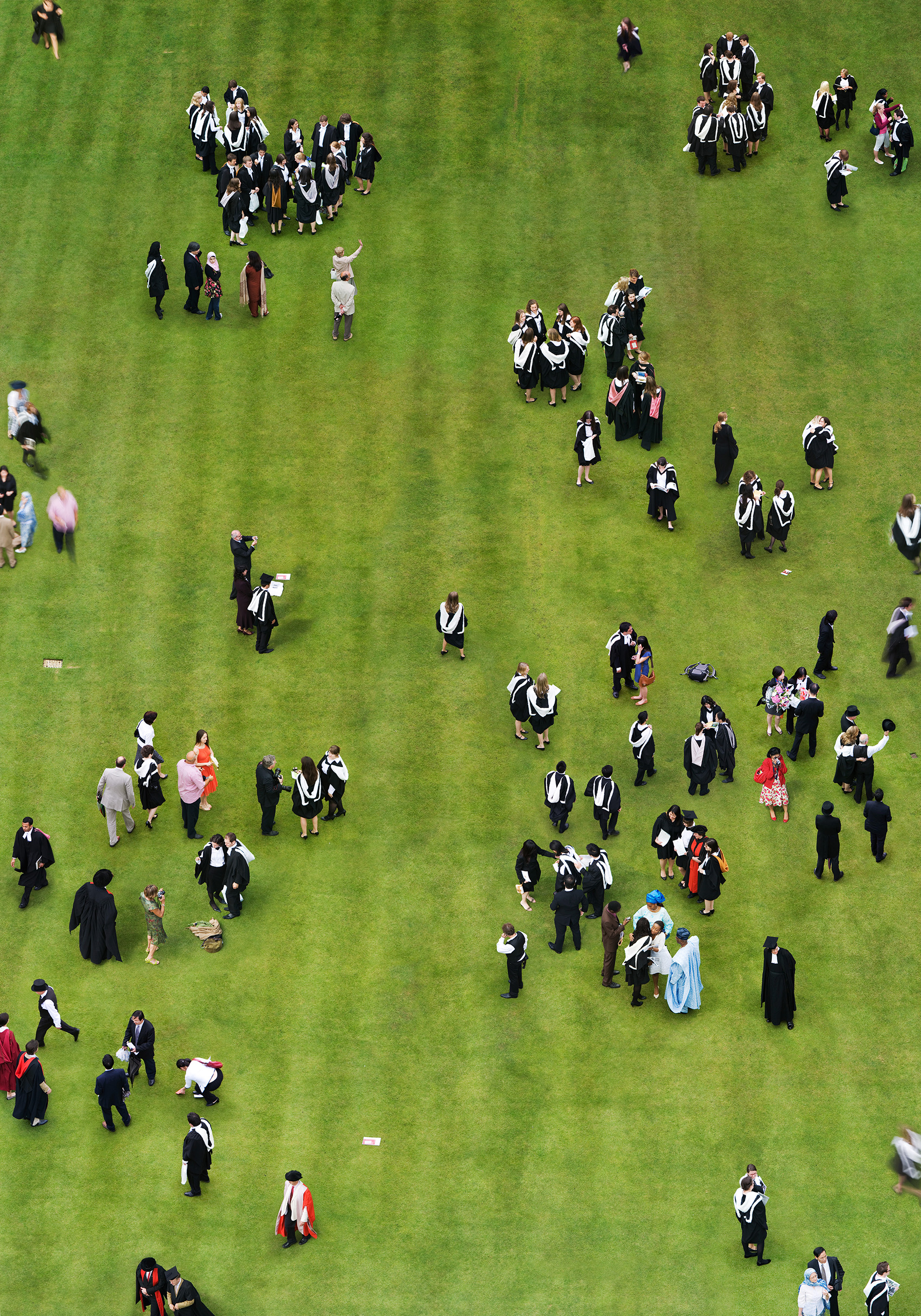
Nickel´s eye (27 min), Luanda
Piezography
size: 145 x 100 cm 57” x 39"
year: 2009
Korfmann aims to capture the memory of a place in designing a literal image of time. The essence of both is the background, the flat surface to which she refers as 'space zero', on which she groups the different fragments of memory captured by the camera. This way, the originally two dimensional surface has become a new, more or less virtual space. Even though the works to be seen in the show Count for Nothing originated at totally different locations on the globe, people do not look that different when seen from above. Only at a closer look, different cultures and rituals will become visible; such as products being carried on the head in the photo from Luanda (Angola). Also the black dresses of the women in Teheran relate to the Academic robes worn by the graduate students of the University of Cambridge.
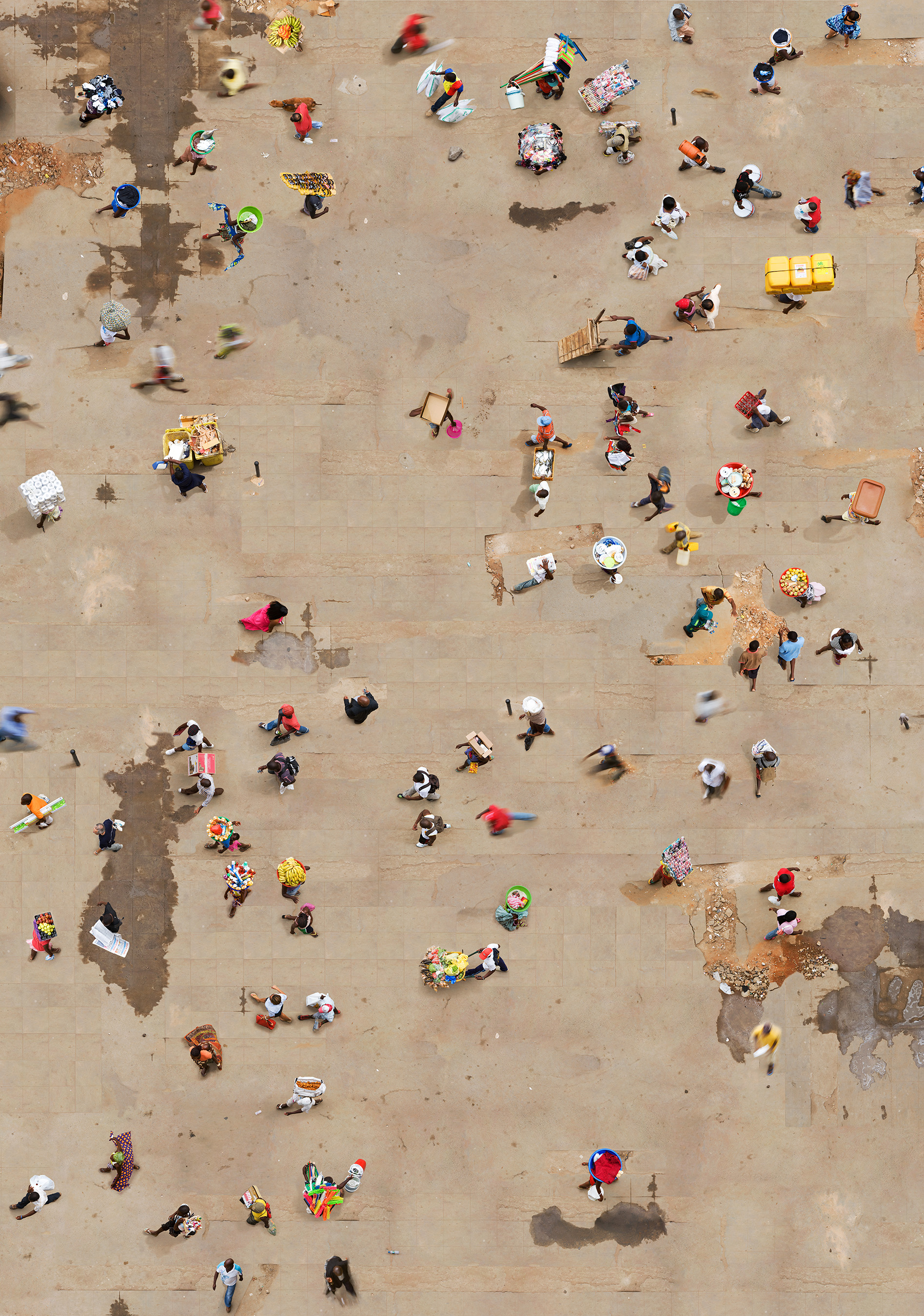
Waiting for Julia (3x10 min), Berlin
Piezography
size: 145 x 100 cm 57” x 39"
year: 2008
Korfmann aims to capture the memory of a place in designing a literal image of time. The essence of both is the background, the flat surface to which she refers as 'space zero', on which she groups the different fragments of memory captured by the camera. This way, the originally two dimensional surface has become a new, more or less virtual space. Even though the works to be seen in the show Count for Nothing originated at totally different locations on the globe, people do not look that different when seen from above. Only at a closer look, different cultures and rituals will become visible; such as products being carried on the head in the photo from Luanda (Angola). Also the black dresses of the women in Teheran relate to the Academic robes worn by the graduate students of the University of Cambridge.
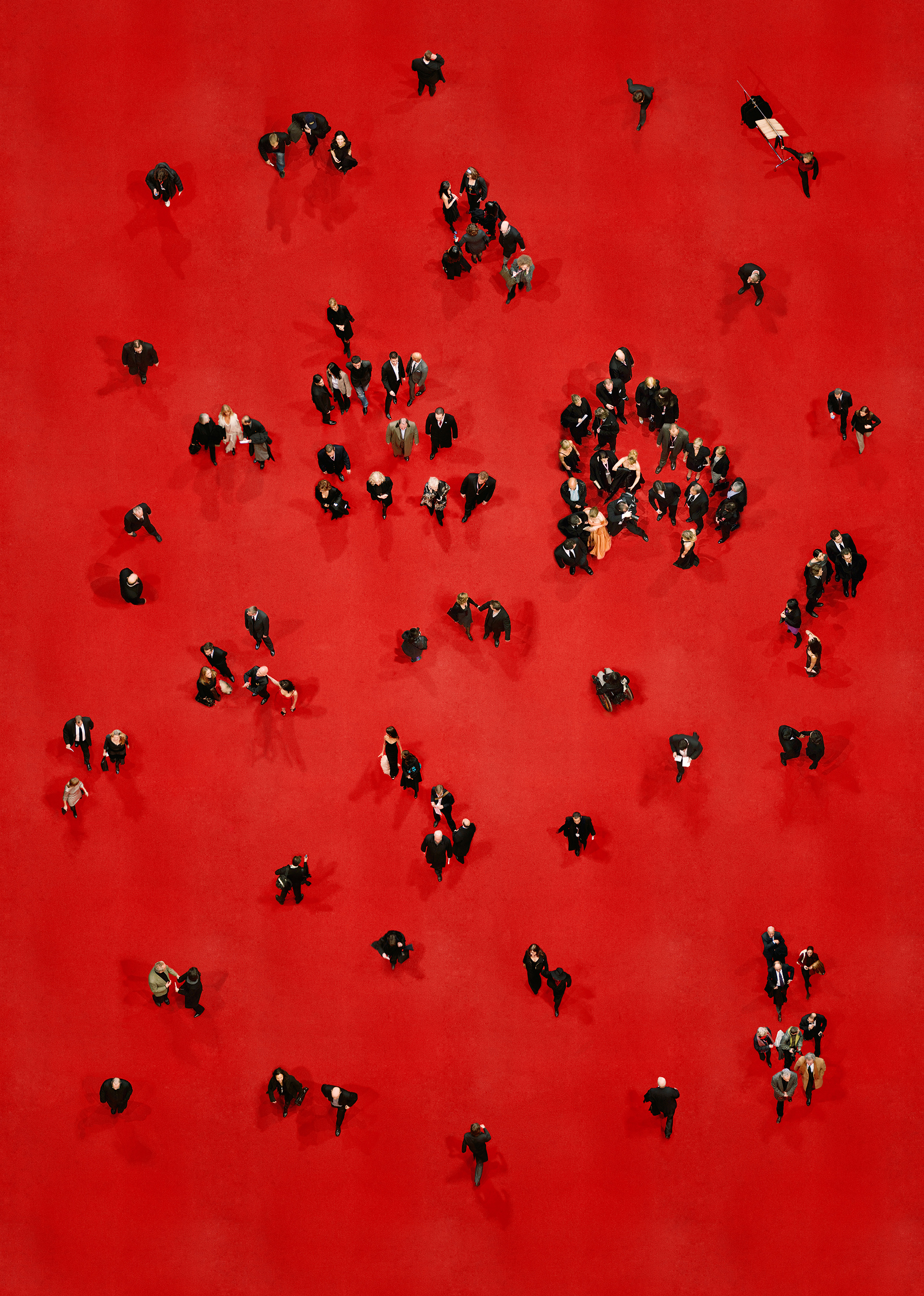
What we Believe In Ajax (48 min), Amsterdam
Piezography
size: 145 x 100 cm 57” x 39"
year: 2010
Korfmann aims to capture the memory of a place in designing a literal image of time. The essence of both is the background, the flat surface to which she refers as 'space zero', on which she groups the different fragments of memory captured by the camera. This way, the originally two dimensional surface has become a new, more or less virtual space. Even though the works to be seen in the show Count for Nothing originated at totally different locations on the globe, people do not look that different when seen from above. Only at a closer look, different cultures and rituals will become visible; such as products being carried on the head in the photo from Luanda (Angola). Also the black dresses of the women in Teheran relate to the Academic robes worn by the graduate students of the University of Cambridge.
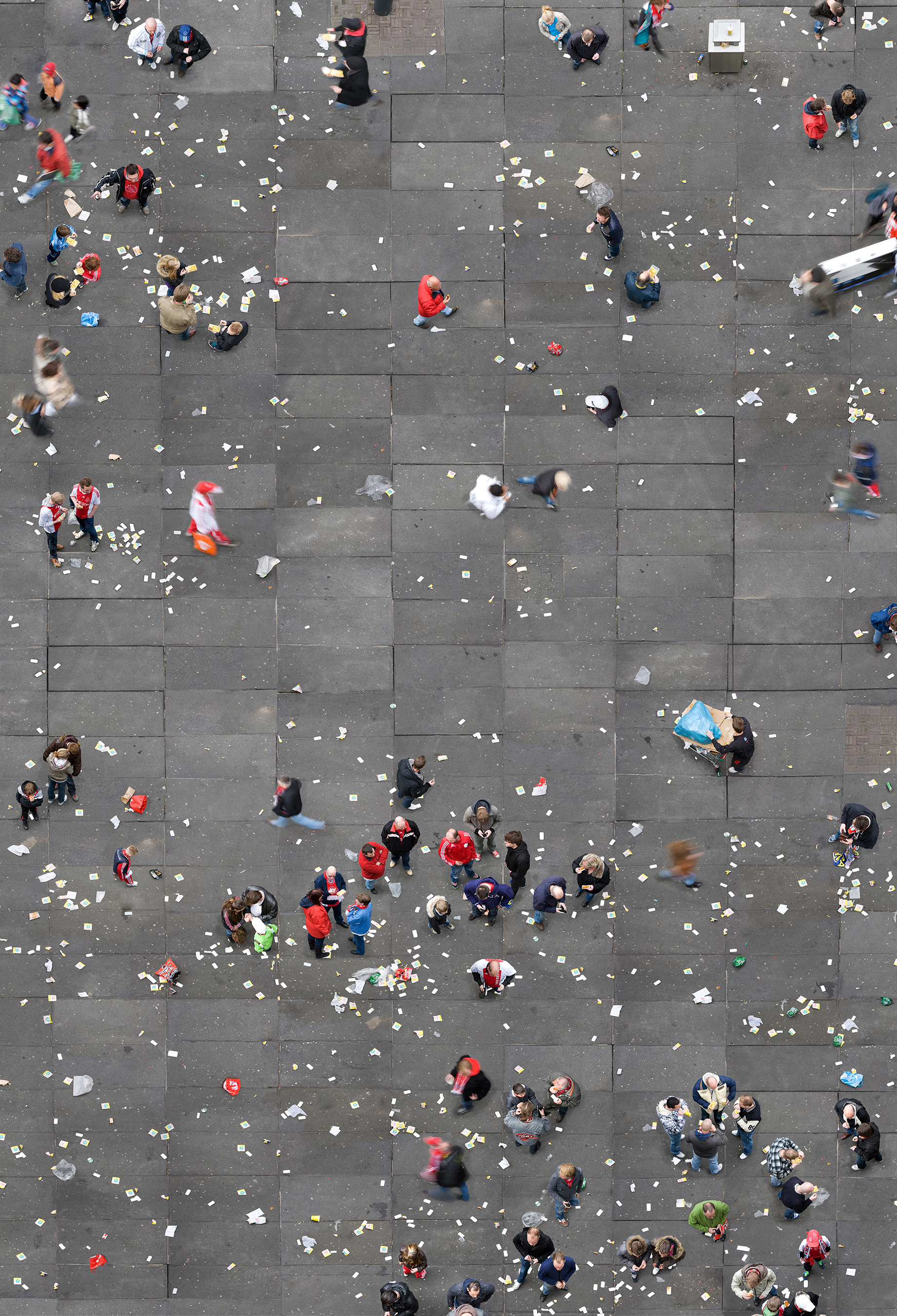
Waiting for Atousa (1h), Tehran
Piezography
size: 145 x 100 cm 57” x 39"
year: 2009
Korfmann aims to capture the memory of a place in designing a literal image of time. The essence of both is the background, the flat surface to which she refers as 'space zero', on which she groups the different fragments of memory captured by the camera. This way, the originally two dimensional surface has become a new, more or less virtual space. Even though the works to be seen in the show Count for Nothing originated at totally different locations on the globe, people do not look that different when seen from above. Only at a closer look, different cultures and rituals will become visible; such as products being carried on the head in the photo from Luanda (Angola). Also the black dresses of the women in Teheran relate to the Academic robes worn by the graduate students of the University of Cambridge.
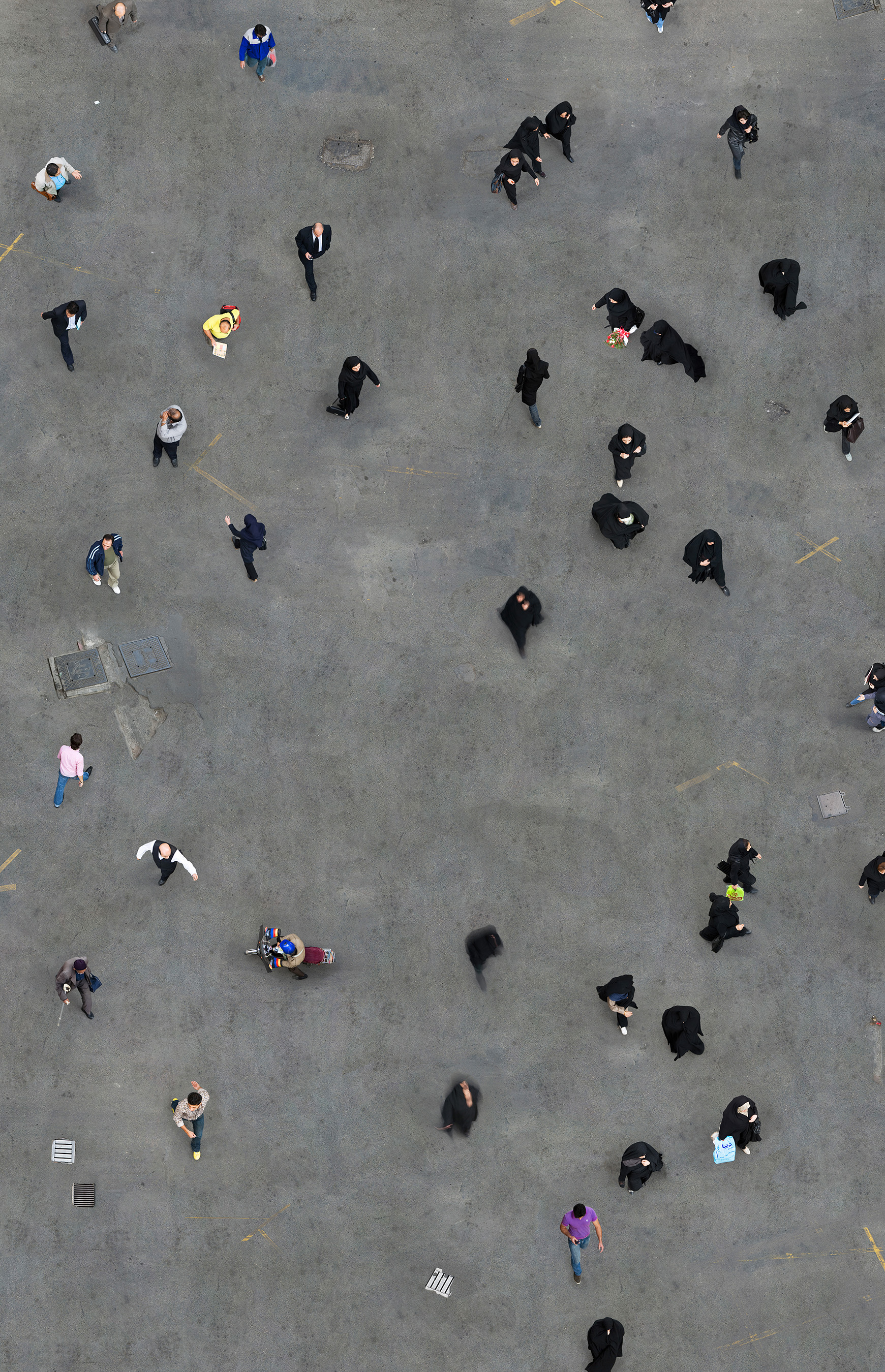
Installation view
Gallery Andersson Sandström, Umea
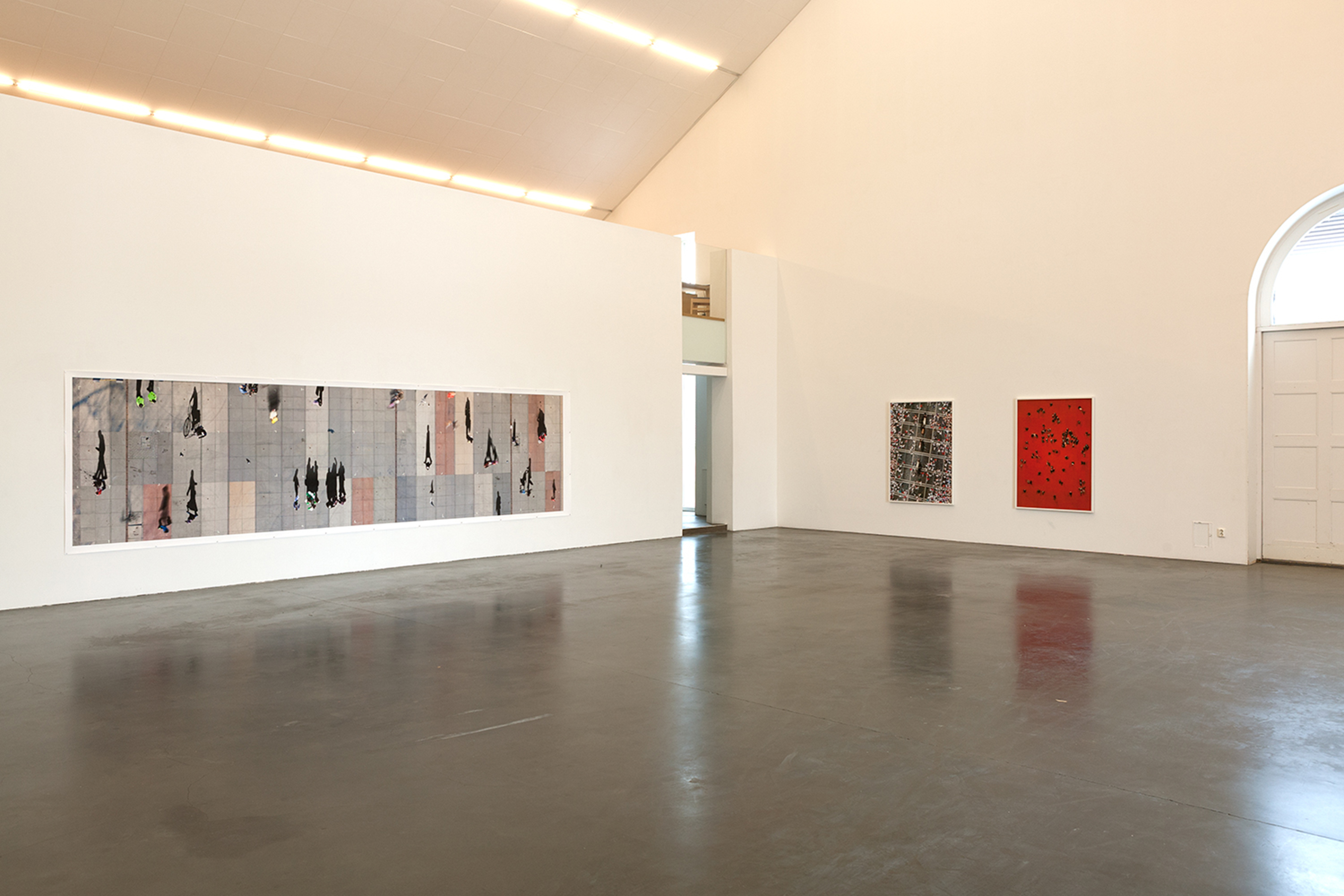
Installation view
CBK Zuidoost, Amsterdam
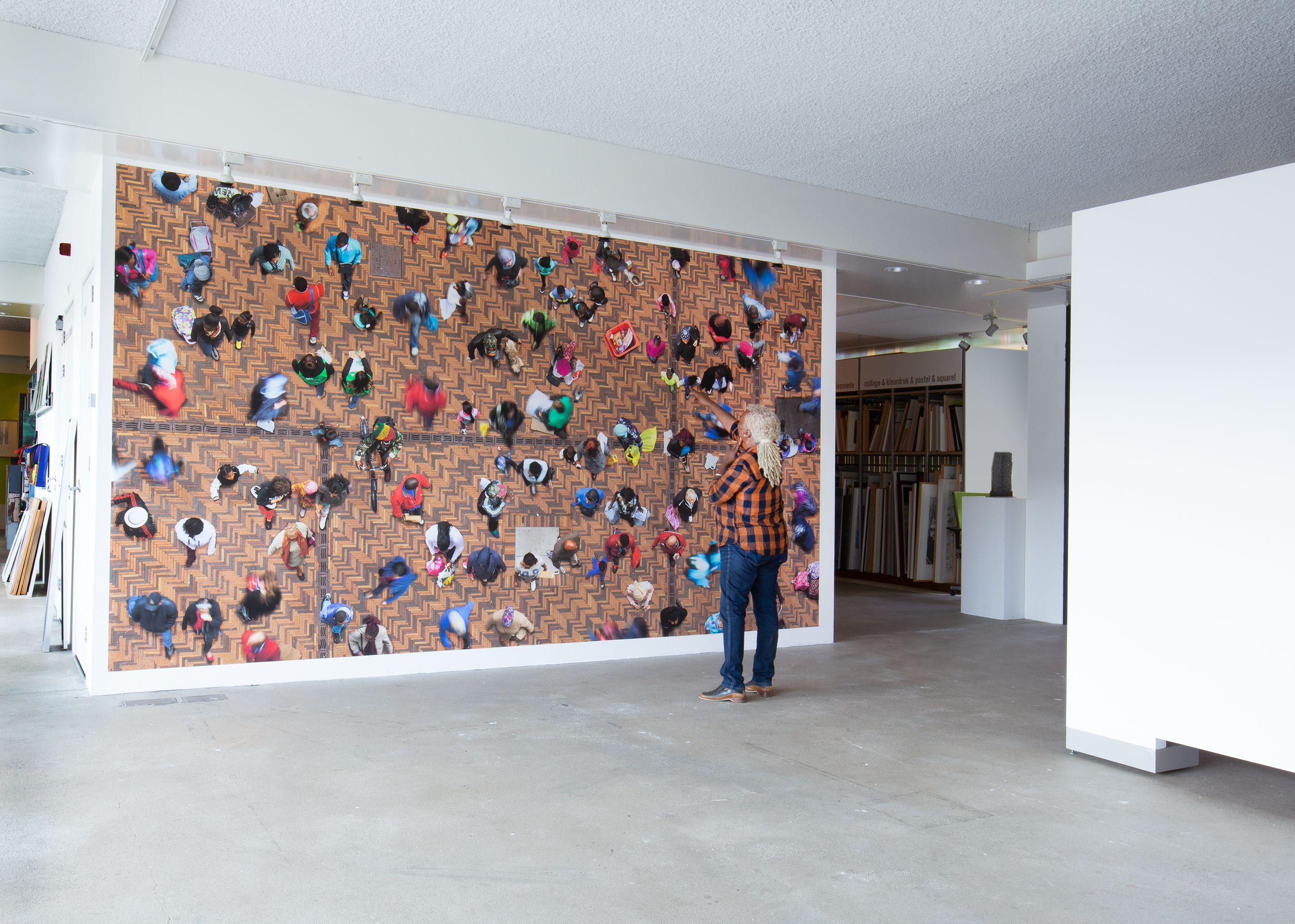
Installation view
Hilgemann Gallery, Berlin
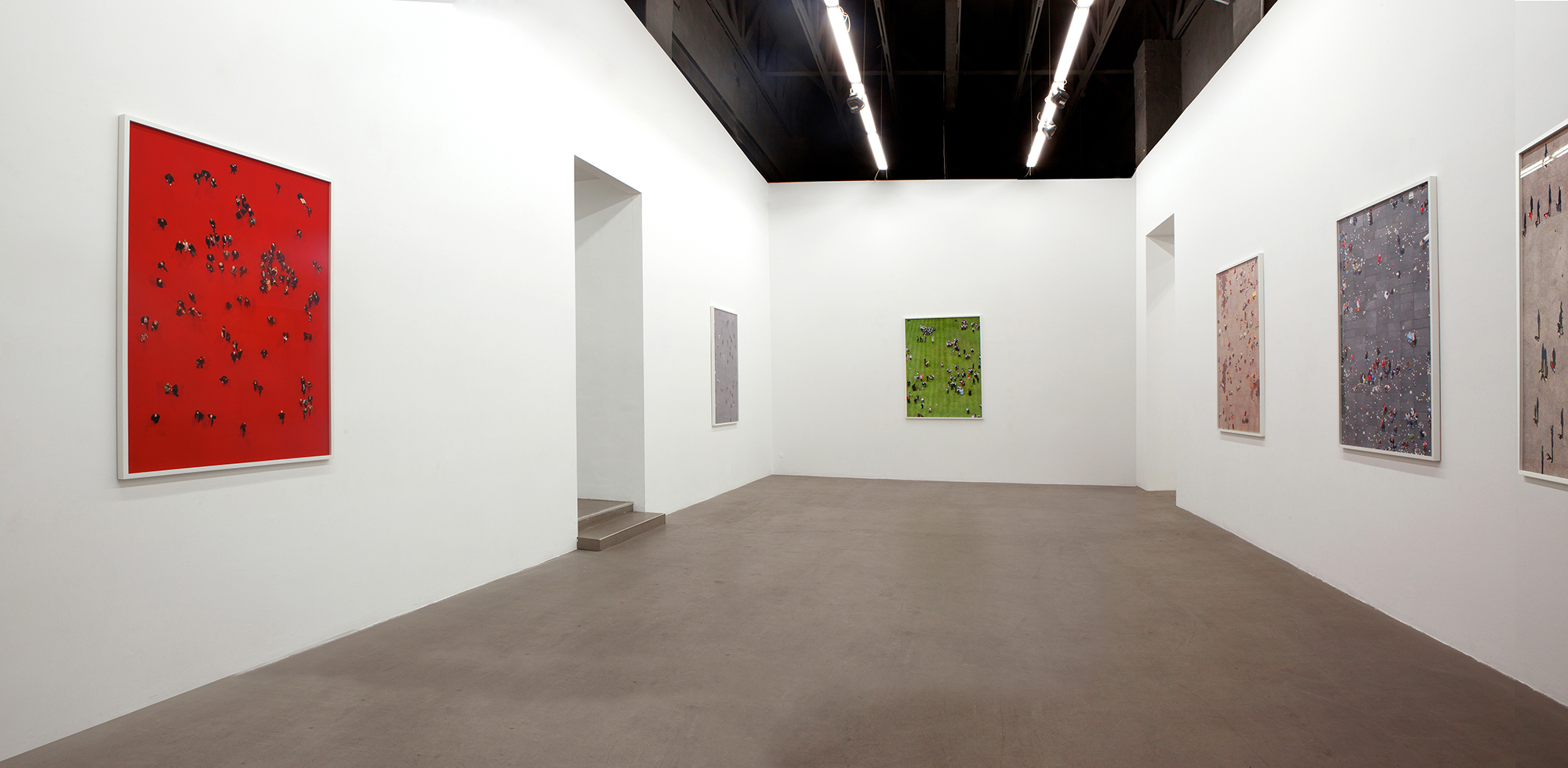
Vrindavan (41 Min)
Piezography
size: 145 x 100 cm 57” x 39"
year: 2012
Korfmann aims to capture the memory of a place in designing a literal image of time. The essence of both is the background, the flat surface to which she refers as 'space zero', on which she groups the different fragments of memory captured by the camera. This way, the originally two dimensional surface has become a new, more or less virtual space. Even though the works to be seen in the show Count for Nothing originated at totally different locations on the globe, people do not look that different when seen from above. Only at a closer look, different cultures and rituals will become visible; such as products being carried on the head in the photo from Luanda (Angola). Also the black dresses of the women in Teheran relate to the Academic robes worn by the graduate students of the University of Cambridge.
Shanghai (46 min)
Piezography
size: 145 x 100 cm 57” x 39"
year: 2012
Korfmann aims to capture the memory of a place in designing a literal image of time.
The essence of both is the background, the flat surface to which she refers as 'space zero', on which she groups the different fragments of memory captured by the camera. This way, the originally two-dimensional surface has become a new, more or less virtual space. Even though the works to be seen in the show Count for Nothing originated at totally different locations on the globe, people do not look that different when seen from above. Only at a closer look, different cultures and rituals will become visible.
Dance is often practised as entertainment, but it also has cultural and social meanings, such as expressing emotions, celebrating traditions.
In this picture, people dance in a public square in Shanghai, a ritual often practised and deeply rooted in Chinese culture that promotes health and community bonding.
